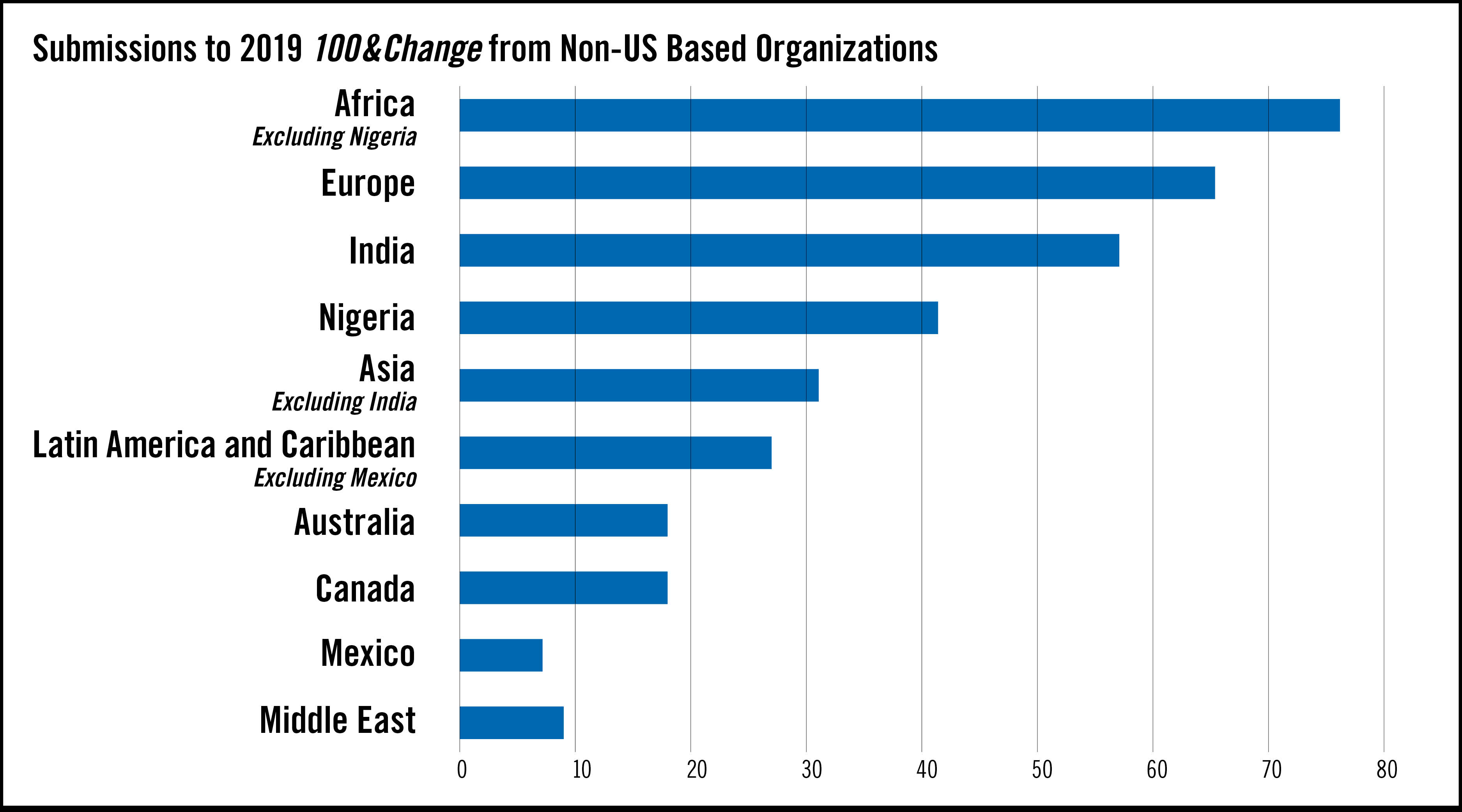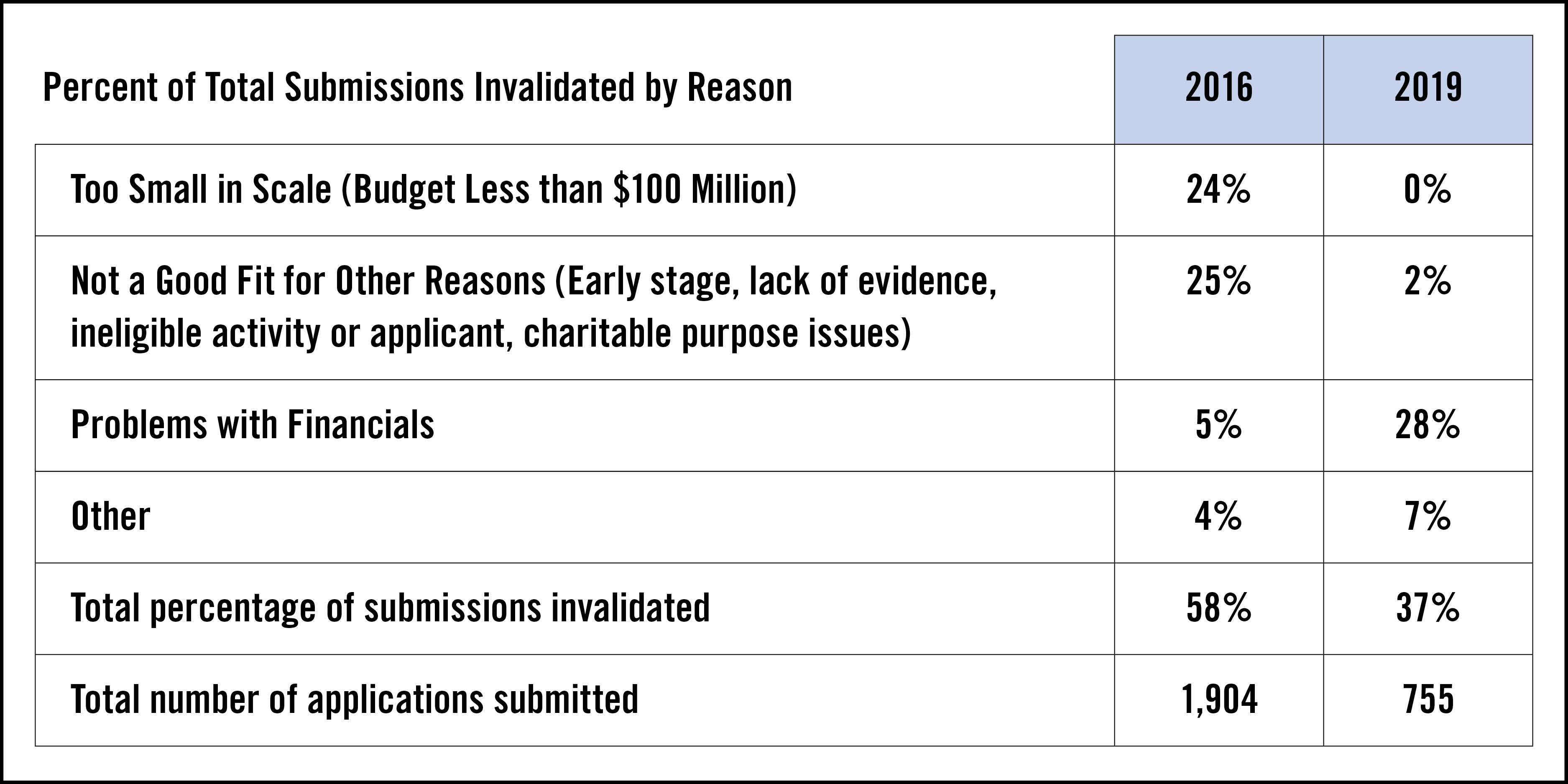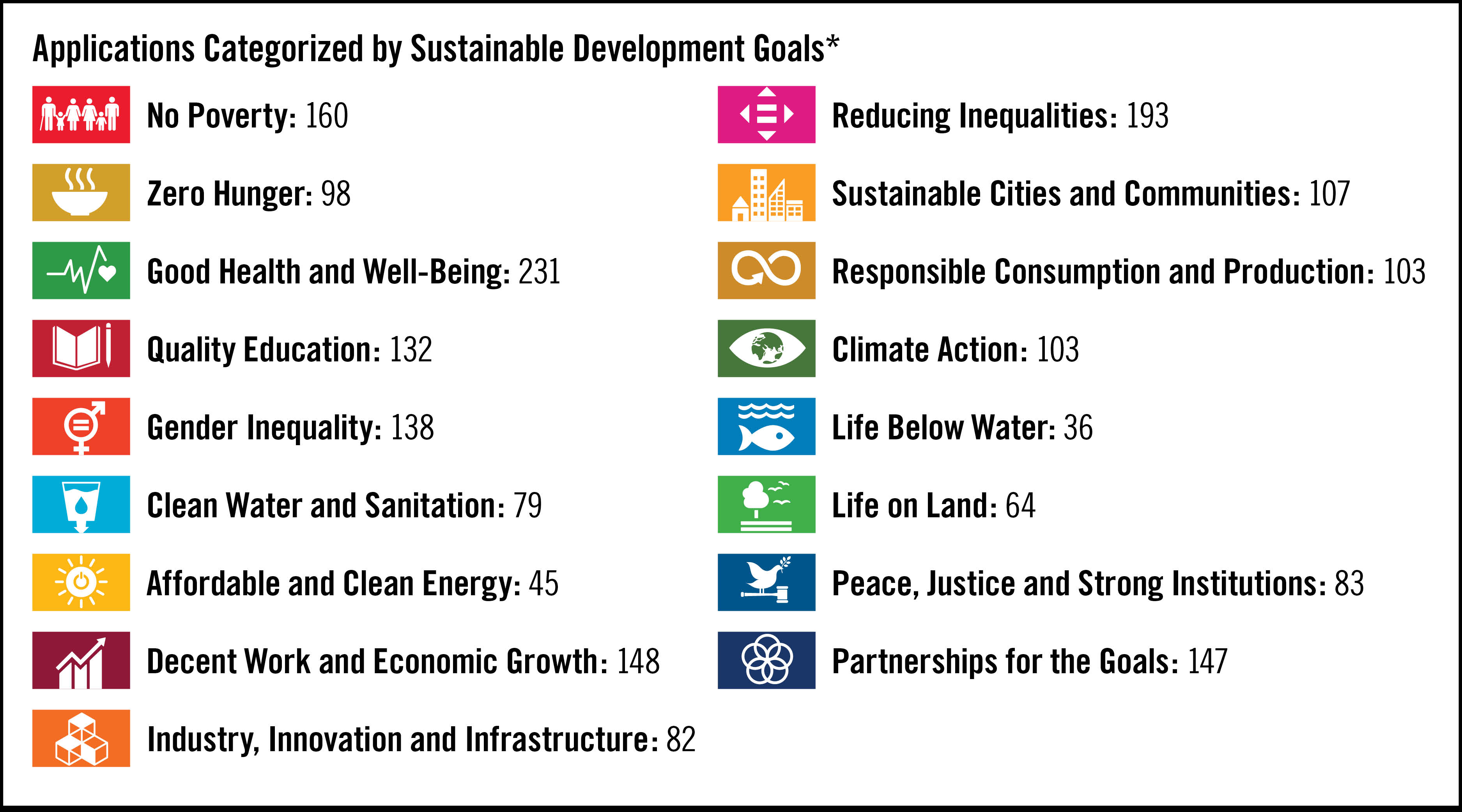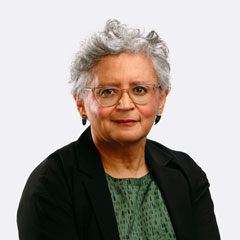Cecilia Conrad, Managing Director, 100&Change, provides an early look at the 2019 applicants in our global competition for a single $100 million grant.
The big headline from the 2019 cycle of 100&Change is the drop in the number of applications as compared to the inaugural competition: 755 in 2019 vs 1,904 in 2016. We believe that the new organizational readiness tool helped eliminate projects that were not a good fit for 100&Change. The drop in the number of applications might also be attributable to a higher number of collaborative proposals. Nearly half of the applicants indicated that their team involved a collaboration of one or more organizations.
Both trends are good news. Though it is too early in the process to draw conclusions, we see no diminution in the quality of ideas.
Let's start with some information about this year’s process. We had 3,690 registrants and 755 applicants. Forty-seven percent of lead applicants were based outside the United States, representing 61 countries. Of the overall applicant pool, 87 are for-profit entities and 143 are colleges and universities. Nearly 200 said they applied to the inaugural 100&Change.

After the application period closed in August, MacArthur staff worked to review each 100&Change submission to ensure that it complied with the application requirements and rules before advancing on to the Peer-to-Peer Review stage. Our application of eligibility criteria was strict but, to the best of our ability, fair and consistent. Each submission received a second and, often, even a third look before it was disqualified.
In the inaugural 100&Change, we rejected 58 percent of applications during the administrative review process, and this statistic was deeply troubling. We recognized the amount of time, resources, and vision invested in each application—many of them promising ideas and potentially effective projects that were not a good fit for 100&Change, because they were too small in scale, too early in stage, or lacked evidence. We resolved to communicate more clearly our expectations for evidence of effectiveness, stage of solutions, and our requirements with respect to Memorandum of Understanding (MOU) agreements and financial statements.
We succeeded—at least partially. For the 2019 100&Change, we invalidated 37 percent (277) of applications during administrative review. A side-by-side comparison of 2016 and 2019 reveals a noteworthy shift in the reasons proposals were invalidated during administrative review.
In the inaugural 100&Change, the number one reason for invalidation was that the project proposed a budget significantly less than $100 million. In 2019, we avoided this problem by forcing budgets to total $100 million.
In the inaugural 100&Change, a high percentage of proposals were invalidated for being at the wrong stage, lacking evidence of effectiveness or organizational capacity, or offering no plan for sustainability. In 2019, we created the organizational readiness tool and that appears to have dissuaded organizations from making an investment in proposal preparation for projects that had a low likelihood of success. Less than one percent of proposals were disqualified for reasons of fit.

The number one reason for disqualification in 2019 was a failure to submit the required financial documents. We required the three most recent consecutive fiscal years of data from the lead organization’s Audited Financial Statements with English translation if needed. These Audited Financial Statements should have included (1) the Independent Auditors Report, (2) the Statement of Financial Position, (3) the Statement of Activities, (4) the Statement of Cash Flows, as well as (5) the Notes to the Financial Statements (if any) under U.S. GAAP, or the equivalent statements under IFRS if governed by a foreign jurisdiction.
We understood that this requirement would exclude new organizations as the lead applicant and that it would impose a burden on small organizations that might have no other mandate for audited financials. But we made a decision to send a clear signal that organizations without this documentation would have a low probability of advancement in a competition for a $100 million grant.
We disqualified only a tiny fraction of applicants for reasons related to the project’s fit with the goals of 100&Change. This fact supports our hypothesis that the organizational readiness tool worked. What we do not know is whether the tool discouraged applicants whose projects might have fully met our criteria. We will need to investigate this question further.
One of the added benefits of the administrative review process for MacArthur staff is the opportunity to read the many compelling and inspiring ideas about how to solve the world’s most critical problems. Applicants categorized their proposals based on which Sustainable Development Goal (SDG) it would advance. The most frequent SDG represented among the 100&Change project proposals is SDG 3, “Good Health and Well-Being,” with 231 submissions. However, some proposals appear in multiple categories, because they address multiple challenges. Many 2019 applicants have made their videos public on YouTube. I encourage you to take a look. Hopefully they will inspire you for what is to come.

*Proposals may appear in multiple categories.
View raw data ›




